Orchids are one of the daintiest flowers you can grow in your home. From supermarket flowers to exotic varieties, there is an orchid for every level of gardener out there. Whether you’re looking to care for the new orchid you received or you’re a seasoned grower who is looking to multiply with propagation, this guide covers everything you need to help you manage orchid care at home.
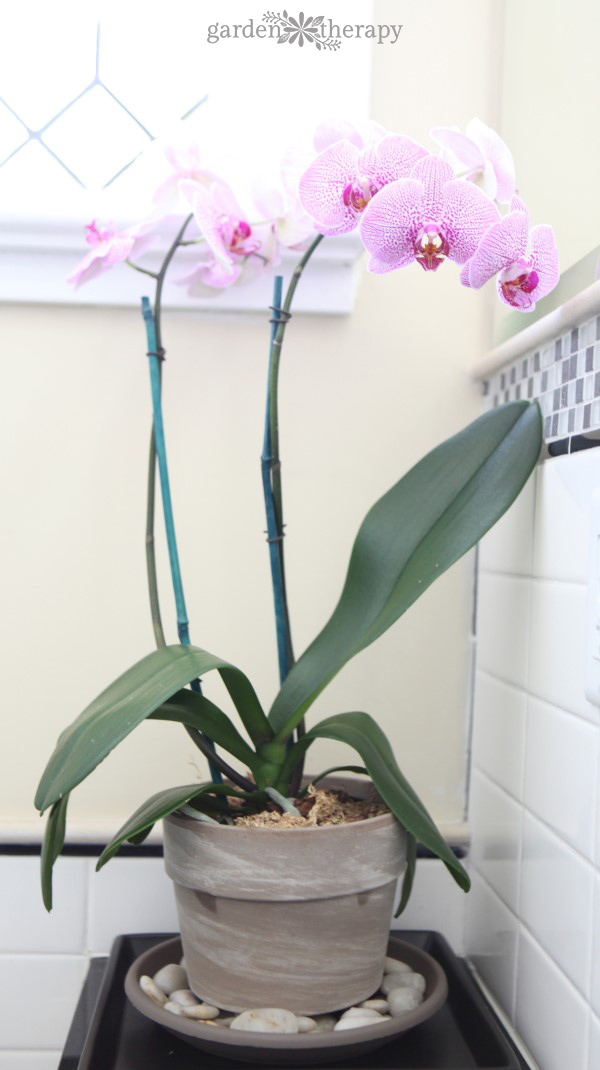
If you’ve ever owned an orchid or wanted to, you’ve probably been told these plants are notoriously tricky. Yes, they do require some special care and are truthfully a little bit higher maintenance than other plants, but you will be well-rewarded for your efforts.
Several varieties of orchids, including the popular Phalaenopsis variety, are readily available from nurseries, growers, and home improvement stores where they are sold in their flowering state.
Although the blooms may last for weeks or even months, getting the plant to create new flowers is sometimes a tricky endeavor. For some, they are left with nothing but leaves for months on end! But with the right type of care, lighting, and temperature controls, a healthy orchid will reproduce flowers several times a year.
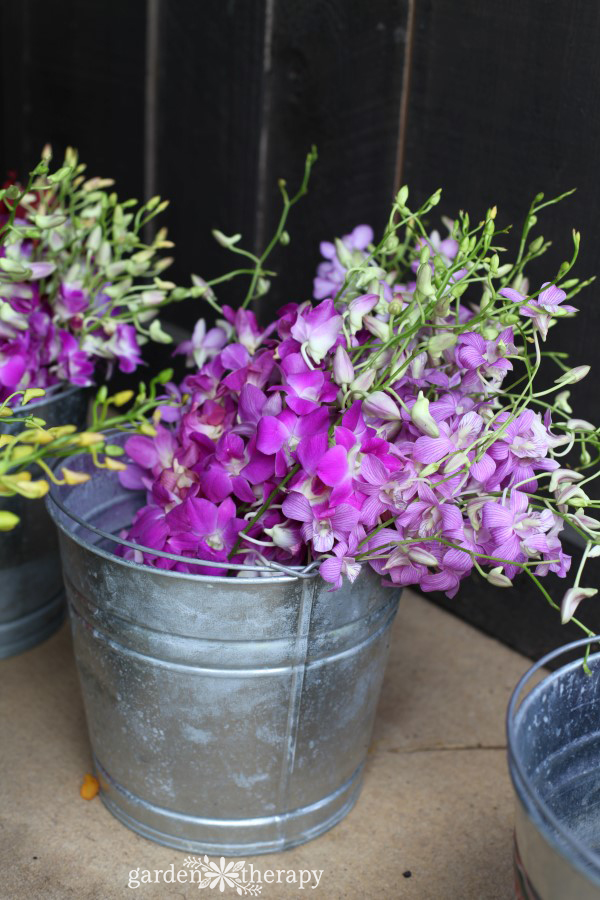
Lighting Conditions for Orchids
First things first, pick the perfect spot for your orchid to thrive! How much and what type of light the orchid plant receives is the most important aspect of their care.
Very few plants will produce new flowers if kept under insufficient lighting conditions. A healthy flowering orchid in its natural environment receives filtered light for several hours during the day. Protected by other overhead plants, the plants receive bits of sun and bright light that peek through the rainforest throughout the day.
Indoors, an orchid plant bred from a nursery will thrive under very bright light. However, protect the plant from direct sun that might burn the leaves or flowers. Orchids should receive at least 3 – 4 hours of clear light each day.
Fluorescent lighting may be beneficial to flower production but usually is not sufficient enough as the only lighting source. When it comes down to it, you want your orchid to flower more than once, pay attention to how much and what kind of light it is receiving.
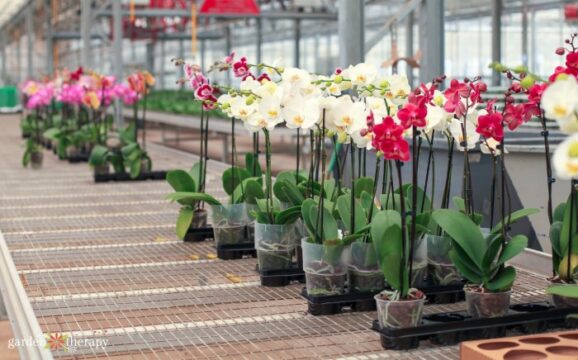
The Best Temperature Conditions for Growing Orchids
Not all orchid varieties prefer the same temperature conditions, but the common types that are sold commercially will do well in normal indoor environments. To flower, orchids generally prefer a daytime temperature between 70 -75 degrees and a nighttime temperature of around 60 – 65 degrees.
Plants enjoy being placed near a shower or bathtub where they experience steamy conditions. Good air circulation is paramount to orchid health, and they will thrive if placed near a protected window with warm but not hot ventilation.
Keep a close eye though, if the temperature is too cool, flower production may be stalled. If you’re looking for a sure-fire way to maintain humidity for your orchid, try making a humidity tray.
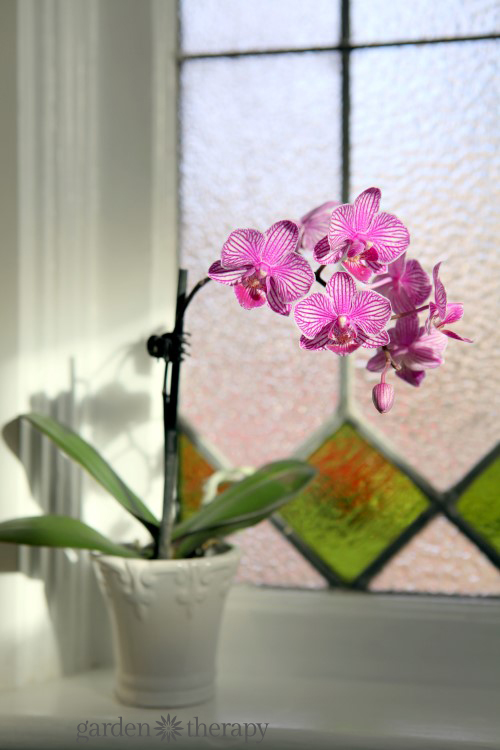
Watering Orchids
To water or not to water, that is the question! During the cooler months of the year, most indoor varieties of orchids only require watering once a week. To water, place plants in a sink or tub and give them a good soaking and plenty of time to drain. Underwatering rather than overwatering is a better practice as the roots need a chance to air and will rot with too much water.
During the warmer months, water the plants twice a week and mist with a sprayer during particularly hot days. Fertilizing an orchid plant on a regular basis will help generate flowers. Fertilize plants a minimum of every 3 weeks and preferably every week to boost flower production. Choose a fertilizer specifically manufactured for orchids.

Replanting Orchids
Most orchids prefer being slightly crowded, otherwise, the roots may be susceptible to excessive moisture and rotting. Nurseries carry a variety of orchid potting mixture, many of which have a high bark content that allows the roots to receive air.
The main objective when repotting an orchid plant is to allow for good drainage and air circulation. Repot an orchid or give it some fresh potting mix every two years.
Finding the right environment to allow an orchid to produce new flowers requires a few simple steps. If the light, temperature, and moisture conditions are suitable, a healthy orchid will continue to produce stunning floral displays for many years.
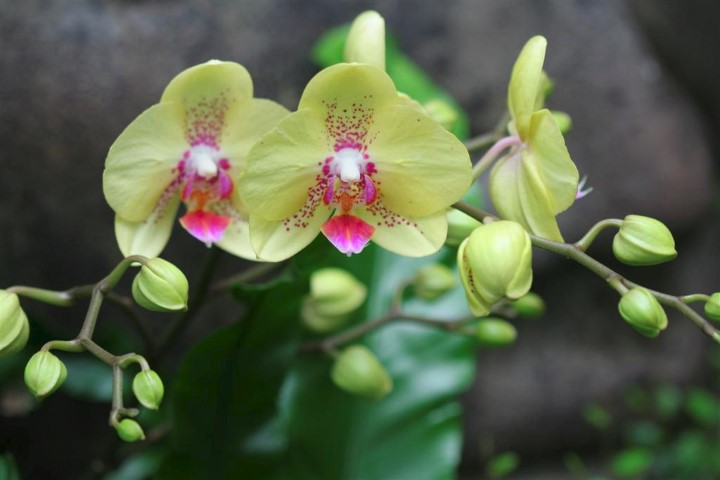
California’s Orchid Centre
In 2017, I had the pleasure of visiting Floricultura’s location in Salinas, California. Oh my goodness, was it ever impressive! They were in the midst of preparing for their California spring trials, and they were growing orchids left and right.
From small cuttings to fully blooming giants, being in a warehouse full of propagating plants is really a dream come true. I barely have enough room on my windowsills to propagate!

Orchids being so finicky, most people don’t think to propagate them. However, they are so lovely it is worth the patience and effort. I got some great tips from the team at Floricultura during my visit, and I would love to share some of them with you.
Orchid Propagation Tips
There are a few ways you can propagate an orchid at home. I’m going to cover 3 different methods: division, stem cuttings, and offshoots. Different methods will work for different types of orchids, so be sure to fully inspect your orchid beforehand to determine which method may be best.

Stem Cuttings
While stem cuttings are simple to make from an orchid, success isn’t as guaranteed as the other methods of propagation. But I encourage you to try your hand at it, as it’s exactly how California’s Orchid Centre propagates their orchids!
First, identify which stem to cut. Only stems with a keiki can be propagated from a cutting (no leaf cuttings will work). To identify one, it should be thick, healthy, at least 10 inches high, and have a good aerial root system attached. Make sure it’s not a flower spike!
Cut the stem near the base of the orchid and just above a node, or leaf joint. This will allow a new orchid to continue to grow from the trimmed stem.
Next, cut your stem into smaller pieces that contain at least 2 nodes each and aerial roots. I then like to cover the ends with an anti-fungal such as cinnamon or charcoal.
Place the stems horizontally in a tray of damp sphagnum moss. Keep the tray in a clear plastic bag to help contain moisture, and then place it in bright (but not direct) sunlight. Remember to support humidity at all times! After a few months, you should see some new leaves and roots beginning to form.
Division

You will want to use this method once the plant has fully matured and finished flowering. This method is best if an orchid has outgrown its pot and is a few years old. There are a couple different approaches to dividing orchids, using either active or dormant pseudobulbs.
Active pseudobulbs will have leaves and stems and can be divided as long as they have enough roots to sustain their growth. Carefully cut and separate between rhizomes and then replant separately.
Dormant pseudobulbs will have no leaves or stems and will sit “sleeping” in the pot. They can be carefully divided and planted on their own. Eventually, they should start growing and produce a brand new orchid.
OffShoots
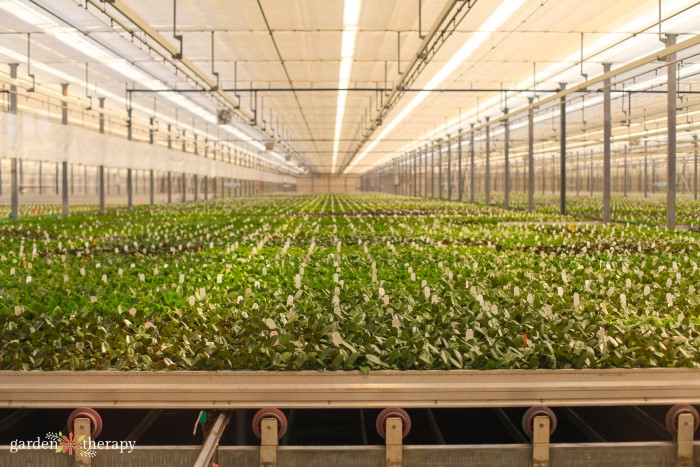
This is the easiest way to propagate orchids if you’re lucky enough to have them. These little offshoots are often referred to as a keiki, meaning baby in Hawaiian. They are small plants that will form at the base of the orchid or off of a stem. Only cut keikis once the parent plant has finished flowering.
Water the parent plant before you begin cutting. Then, cut the offshoots beneath the stem and roots of the plant once they have reached a decent size (at least 3 leaves) and have 1 inch roots.
Plant it in sphagnum moss with the roots near the surface. Keep your keiki moist at all times and avoid putting in direct sunlight until established.
If you have a healthy, happy orchid, then you should be able to create more orchids using one of these methods. Or, if you’re happy continuing to baby your one, don’t mess with what is already working!

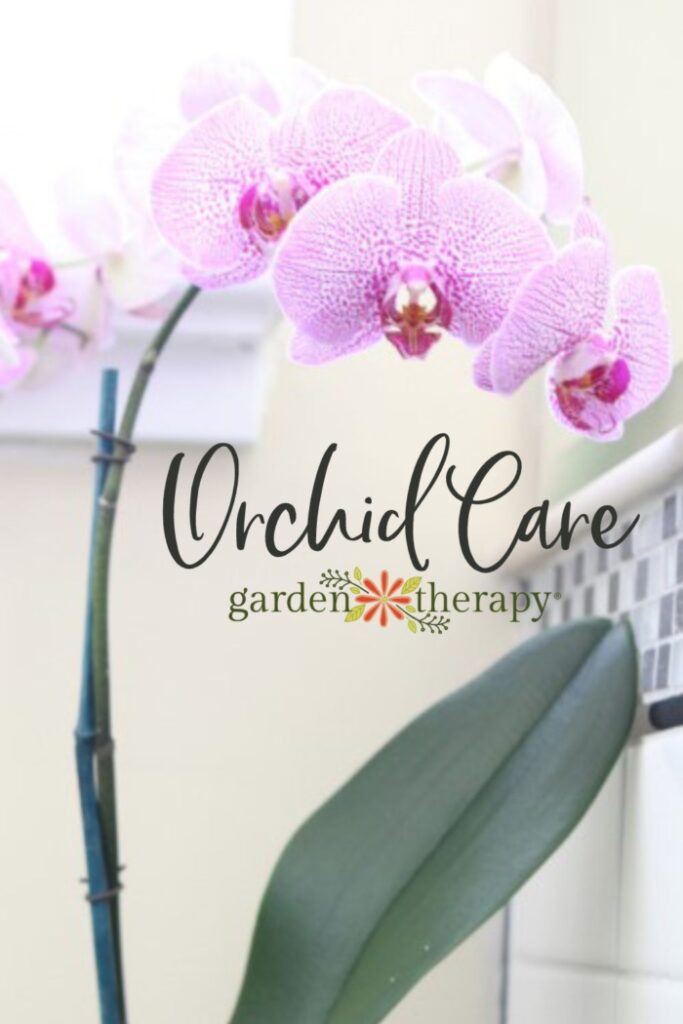



Hi Stephanie Rose, love your name. Just found your website through Facebook and thank you SO much for this article!! I just learned to care for Phal Orchids last year and it’s my absolute FAVORITE flower!! And I always wanted to have my own Orchid collection so I cannot wait to try your great tips, thank you again and stay safe and well!!💖🤗🙏🏼🙏🏼
Excellent article!
Hi Stephanie Rose, thank you for your terrific information regarding orchid propagation. Can I use the stem cuttings with Phals? My orchid fascination is about 8 months old and want to grow more please! Thank you again. Denise
How often should I water the orchid stem cuttings?
Thank you so much for allowing me to post a comment. I found your page to be very Helpful!
I love my orchids. I have 2 & I’m looking forward to propagating them